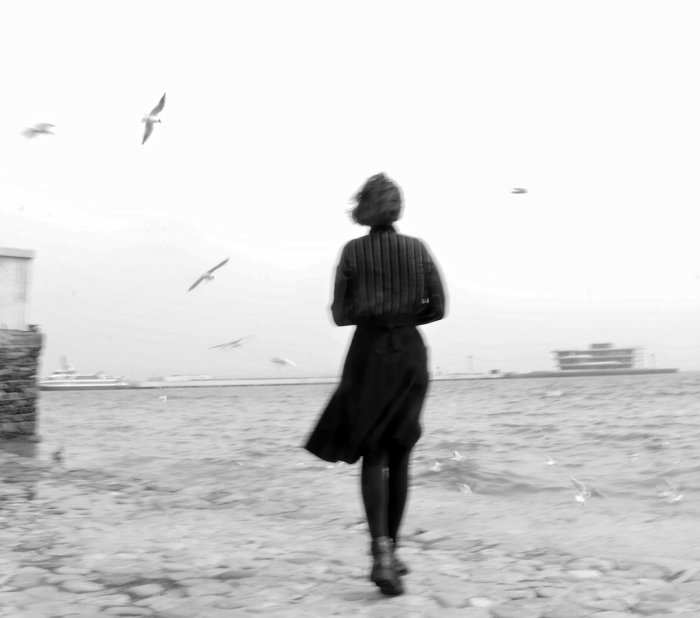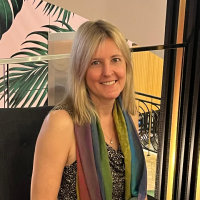Several years ago, I found myself in an unhappy and confusing marriage.
We had two young children, but I was almost always the only adult at home to take care of them. My (now ex) husband went to work every day, but he left the house early and came home late, leaving me with all of the responsibility for child care, grocery shopping, food prep, and housekeeping, even though I, too, worked full-time.
I loved my children dearly, and always felt it was a great honor to care for them. At the same time, being the only adult in the equation was not something I signed up for, and it left me angry and resentful. I expressed my dissatisfaction to my then-husband—loudly.
In the course of our 14-year marriage we went to couples counseling three different times, but as soon as therapy ended, always prematurely, the old patterns returned.
I have always been a spiritual seeker and particularly fascinated by archetypes. So I signed up to take Caroline Myss’ Sacred Contracts self-paced archetypes course, and was slowly working my way through the program. One evening just before bedtime, my kids were playing and I put on one of the program’s videos.
One of the instructors described the Victim archetype and what she said was so real to me, it was like a lightning bolt tore through my life. I grabbed a notebook and a pen, and started taking notes as furiously as I could. I went on like this for a while, pausing the video to frantically take notes, then restarting the video, completely absorbed and transformed by what I was hearing.
Eventually my kids noticed and gave me the side-eyed, “You okay, Mom?” look. I wanted to yell, “I am being a victim! And there’s a way out!” but of course, the correct thing to do was put my kids to bed, which I did. Then I watched the rest of the video and went to bed myself, knowing my life would never be the same.
In her book, Myss describes archetypes as “psychological and emotional patterns of power that exist in the collective unconscious.” She goes on to say it is imperative we learn to recognize archetypes, especially in ourselves, because when we are not aware of them, they tend to express themselves from their shadow sides. Becoming aware of our archetypes is the first step to becoming the conscious creators of our lives; otherwise, we are living by their default programs.
What I learned the night I watched that video is that the Victim is one of the four survivor archetypes, which means that it’s a universal archetype every person has in common, and that we all develop some aspects of the Victim in order to survive. The Victim believes they don’t have enough power to protect themselves, that the world is too powerful for them to have what they want, or that they’re simply “not allowed” to have the things they desire.
The Victim behaves as if some unseen force is continually oppressing them, conspiring to keep them unhappy. This level of unconsciousness is what Myss calls the chronos level of consciousness. Chronos is where we default when we are stressed. It’s an unevolved, or shadow, reaction meant to keep us safe from the outside world.
Without being aware of it, I was living in the shadow of the Victim. I sat home every night with my beautiful children, at times feeling sad and confused that their father seemingly didn’t care enough about us to be around, at other times blaming him for my predicament. The blaming part of me I now call my Righteous Perfect Victim, which is not a great look if you think about it.
But sadness, confusion, and blame weren’t getting me anywhere. In fact, my disempowered feelings soon developed into breast cancer. I was lucky—surgery and one round of radiation seemed to do the trick—but I was beginning to understand that these chronic feelings of disempowerment were not serving me, my health, or my children.
The path out of victimhood is through the Warrior archetype. The keyword for the Warrior is boundaries. If the Victim says, “I’m not allowed,” the Warrior says, “I will not allow.”
Imagine the Warrior, standing in a grounded mountain pose. Now imagine them bringing their hands in front of them, chest height, palms facing outward in a posture of radical self-protection. The Warrior calmly but firmly says, “I will not allow…” And you fill in the blank. For example, “I will not allow myself to be treated in a way that is unloving.”
As the Victim evolves, they begin to realize that they are their own authority. Having firm boundaries is the gift the Warrior archetype brings to us when we are entertaining the Victim in the shadow. The Warrior is clear. They have a goal. They are peaceful. They may be defiant, but they do not use their power and boundaries to oppress or destroy. Their job is to protect themselves from those who might otherwise violate their boundaries.
Often, we invoke the Warrior when we need to protect ourselves from our own destructive thought patterns. The next time the you tell yourself something along the lines of, “I’m not good enough,” (or its infinite variations), imagine yourself as the Warrior, calmly but firmly holding your hands in front of you, palms facing outward, saying, “I will not allow this unloving thought to continue.”
You might think I woke up the morning after my lightning bolt realization and told my husband I wanted a divorce. I did not. The first thing I did was start going to the gym. I had been relatively physically fit my whole life, but two kids, a full-time job, a disempowering marriage, and cancer had taken its toll.
It was time to change things.
Claiming time to go to the gym might not seem like a courageous step to most people, but for me, it was an act of defiance. Since I was responsible for kids both before and after work, my only option for gym time was during the work day, which meant not working as much and not making as much money as I did before. This did not sit well with my husband. In addition, when I was at the gym, I left my phone in the locker room, which only increased tension when my husband called and I didn’t answer immediately. Holding the boundaries of the Warrior began to shine a magnifying glass on the inherent dysfunctional patterns of our marriage.
This left me on shaky ground. As my physical body became stronger and my boundaries firmer, the equilibrium in my already dysfunctional marriage began to deteriorate. Although I was never in physical danger, my life didn’t feel as safe anymore, and I knew had some difficult decisions to make.
This is where ego-undoing becomes a necessary step to greater levels of personal development. If I was going to step into the light of the Warrior archetype, what would happen to the Victim? It became necessary for me to acknowledge and thank the Victim for keeping me safe in my life so far, and to tell her it was time to transform into something greater. This meant I could no longer feel angry or resentful about my circumstances, and I could no longer blame my husband or complain to my friends to get their validation. I couldn’t hide behind my spiritual books, videos, and meditations, pretending I was evolving when I was actually only driving around in endless circles within the larger container of feeling oppressed, angry, and sorry for myself.
Without identifying as a Victim, who was I?
My personal acts of letting go of my former self and having boundaries required a courage I had never known before. Over the next year, I made small decisions that ended in my moving with my children to an apartment in a neighboring town. I probably experienced more anxiety during this time than I had ever previously known. These willful acts of courage are what Myss describes as the kairos level of consciousness, where we break the patterns of conformity, the old way of doing things, and consciously, deliberately, make new decisions for ourselves. In kairos, we act on the world. The striving comes from us.
The Warrior archetype is not the end point of the Victim’s journey of evolution, however. Their final destination is the Guardian of Self-Esteem. Now we have reached the endgame of the Warrior’s journey, or what Myss refers to as the cosmic level of consciousness. Cosmic consciousness is also referred to as symbolic sight. Can we see the arch of our archetypes from shadow to light as one whole, both shadow and light, pain and triumph, necessary for personal transformation? Could I appreciate the aching tenderness of my years of disempowerment and anxiety, even as I gathered the courage to walk through the transformational fire of kairos in the hopes the cosmic would catch me?
Three years later, I am divorced and have become a certified archetypal consultant, guiding others to live with courage and confidence. Have I fully arrived at the Guardian of Self-Esteem? Nope, although sometimes I catch glimpses of it. It’s present when I am able to stand on solid ground and speak my truth without either shrinking or destroying. It’s present when I make decisions that come from power and belief in myself instead of fear.
The cosmic level of consciousness rides in on the coattails of our efforts in the kairos, bestowing, if we’re lucky, the qualities of compassion, kindness, love, gratitude, wisdom, and generosity. These are qualities that are generated from the work we each do on our individual journeys of transformation. They come from the sacrifice of our becoming.
Every time we make a choice that leads us away from reactivity or unconscious thinking, we are cultivating the seeds of these qualities, which support the healing of the collective and the earth as a whole. With enough people engaging in this work, the world could transform into a place that holds the care and well-being for one another and the planet as its first priority.
Becoming aware of our personal archetypes and having the courage to step into the promise of the light they carry is a good place to begin.
~
Please consider Boosting our authors’ articles in their first week to help them win Elephant’s Ecosystem so they can get paid and write more.
~









Read 8 comments and reply